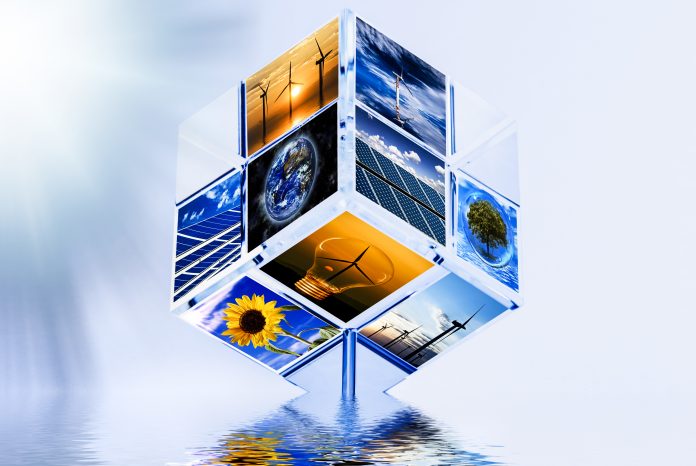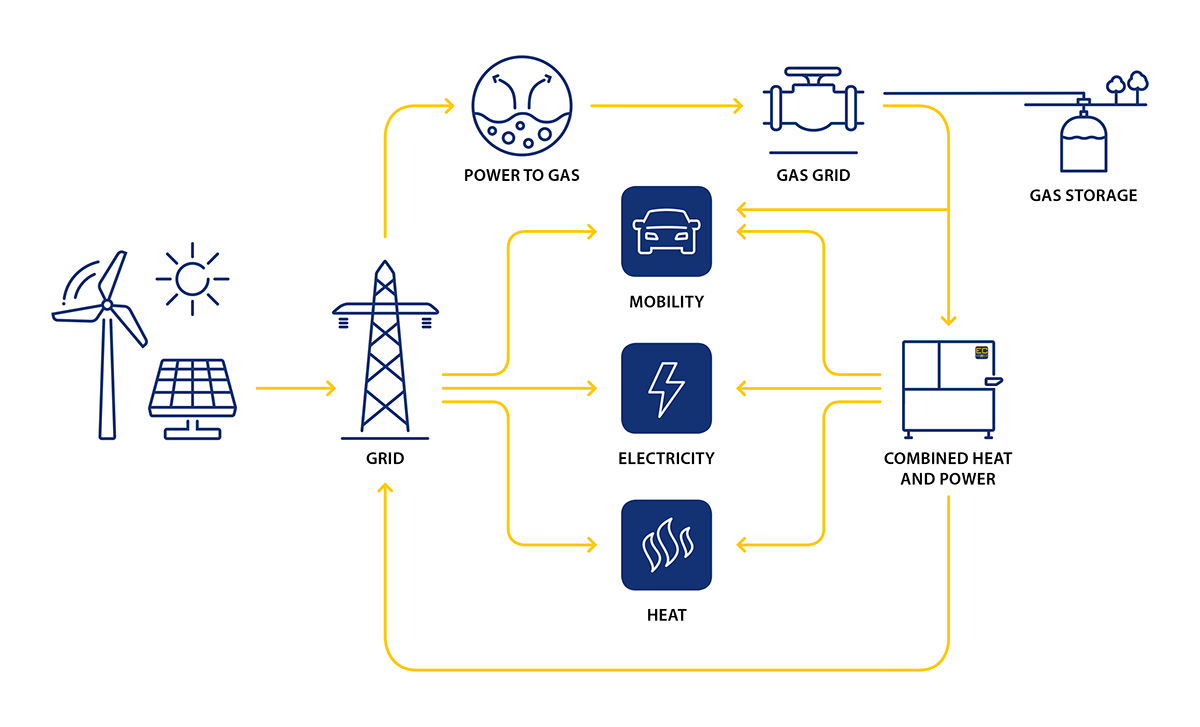Bjarne Bogner, CEO of EC Power, discusses how green gas is the answer to fighting climate change, and which role wind and solar power play
Fossil fuels must be replaced completely by green fuels. This means that the resources we use can be nothing but wind and solar power. There is only one way in which climate change can be tackled, and that is to invest heavily in solar panels and wind turbines for production of power. Our solar panel and wind turbine capacity must be big enough for us to produce the amount of power that is required to produce green fuels.
Green fuels are produced by converting green power into green gas that can be used for heating our homes, supplying industry with energy, and for providing energy for air traffic, shipping, trains and agriculture.
In Germany the amount of solar power produced is impressive, and utility-scale has proved that both solar power and wind power are cheaper than coal power. What is more, prices will likely fall by a further 30% over the next five years.
Green gas
Green gas is produced by having a simple electrolyser transform water and electrical energy from wind turbines and solar panels into chemical energy in the form of hydrogen. CO2 from biomass or from the atmosphere then boosts the green hydrogen in a second production step. The result is biomethane – also known as green gas or biogas, which can be used in the existing natural gas grid and has twice the energy value of hydrogen.
Moreover, there is no need to worry about whether we will have a stable supply of power or gas. As opposed to power, surplus green gas can be stored infinitely without any loss and, when needed, make up for the fluctuating renewable energy sources wind and solar.
Using green gas for production of power and heat is what will help us take the great leap that we are forced to take. One should keep in mind that power consumption and heat consumption are currently to blame for 50% of CO2 emissions. What is required are determined efforts where old coal-fired power stations are converted into gas-driven combined heat and power plants – so-called CHP plants – and extended with power-to-gas plants. This means there will be no need for investing in new CHP plants because the old existing plants will supply society with green power, green heat and green gas. The impact of this would be enormous.
Incentives for sector-coupling
If we are aiming for no CO2 emissions at all in 2050, we have 30 years to convert all fuels into green ones, but it is critical to understand that this is not a problem that can be solved by the energy sector on its own. All other sectors must get involved in helping this process on the way, and the gas and power grids must be coupled together. The phase-in of green gas into the natural gas grid must rise by 3.3% per year, and the technologies required for this are well known.
“Research and development into technologies that can help fight climate change are extremely important, but we should not do research into technologies that will not be useful for the next 20 or 30 years.” Bjarne Bogner
Initially, the cost of green gas will be higher than the current cost of natural gas, but economies of scale and technological development will result in green gas that is not very expensive compared to natural gas. And the companies that take the lead will make large economic gains in the markets by means of exports of their technologies. They will also place themselves in strong positions in terms of international trade.
Popular misconceptions
Climate change is a structural problem that cannot be solved by individuals alone. Of course, it is critical that a strong focus is maintained on non-use. Whenever there is an opportunity to use less energy than we do now, that opportunity must be seized.
“Green fuels are produced by converting green power into green gas that can be used for heating our homes, supplying industry with energy, and for providing energy for air traffic, shipping, trains and agriculture.” Bjarne Bogner
However, it is a misconception that it would make a big difference if all humans on the planet gave up flying and stopped eating meat. These things would potentially lead to no more than a 5% reduction in global CO2 emissions. And the CO2 emissions that can be avoided through the use of electric cars will not make a big contribution either, unless they are fuelled by means of wind or solar power. Electric cars are not in any way greener than the energy source mix that they use. Power merely carries energy; it is not a source of energy. Consequently, power carries CO2 emissions from their energy sources to consumers.
You might think that burning straw or wood is carbon-neutral. Well, imagine what we would do if there was a lack of CO2 in the atmosphere? We would burn all the straw and wood we could possibly spare!
Climate change must be tackled by governments
Research and development into technologies that can help fight climate change are extremely important, but we should not do research into technologies that will not be useful for the next 20 or 30 years. What is required are massive investments in wind power and solar power over the next few years to make sure that human activity does not transform our climate in a way that will make life impossible for future generations. Climate change is an enormous challenge faced by humanity and cannot be met by individuals. It must be solved by governments.
Please note: This is a commercial profile












